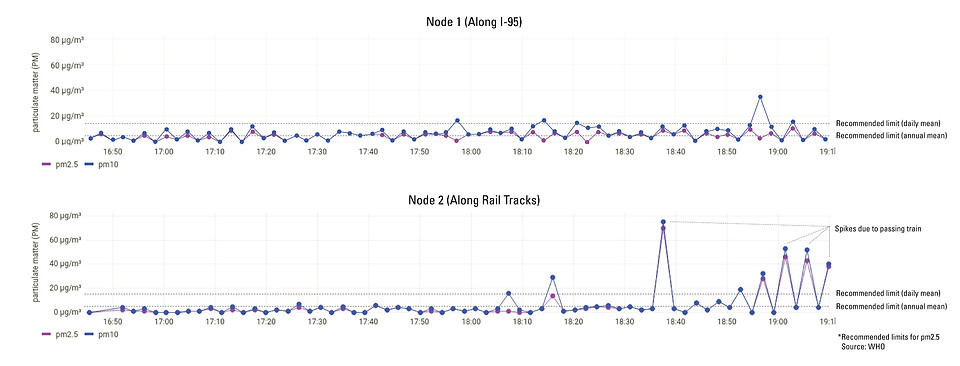AFRICAN BURIAL GROUND AT SHOCKOE
10.10.2021
On 10.10.2021, crowns of light encircled two lightpoles near the Brother Gabriel site of the African Burial Ground at Shockoe. The crowns were designed by the Networked Public Space team at the UVA School of Architecture. Networked Public Space’s mission is to bring environmental issues into visibility through design and technology. The crowns responded to the call of voices nearby, while pollution sensors measured unhealthy particulate matter coming from I-95. The noise and pollution data were collected using open-source sensor kits developed by NPS for connection to community-based environmental monitoring networks. Those sensor kits then provide data to activate public space design, like the crowns at Shockoe, that make environmental data visible. They bring the ongoing environmental justice issues into conversation with the history of the African Burial Ground and the historical injustices and struggles for liberation.

PM 2.5
The data in the graphs below show particulate matter levels at different locations in the African Burial Ground during the 10.10 event. Node-01 was directly up against I-95, which Node-02 was underneath the train tracks on the east side of the Burial Ground. The pollutants we measured were particles averaging 2.5 and 10 microns in size (PM2.5 and PM10). PM2.5 and PM10 are associated with significant health impacts including asthma and heart disease (https://www.epa.gov/pm-pollution/health-and-environmental-effects-particulate-matter-pm). Highways like I-95 are significant sources of PM and other pollutants. The original division of Shockoe and the African Burial Ground caused by urban renewal and highway construction continues to resonate with negative environmental and health impacts. On the evening of 10.10, a strong breeze managed to keep the air reasonably clear, but levels of PM10 and PM2.5 still spiked multiple times - into levels associated with negative health outcomes.

We are grateful to have participated in this event. We thank Free Bangura and Untold RVA for their collaboration on the event, as well as Ana Edwards of Sacred Ground Project and Queen Zakia Shabazz of Virginia Environmental Justice Collaborative for welcoming our participation.




